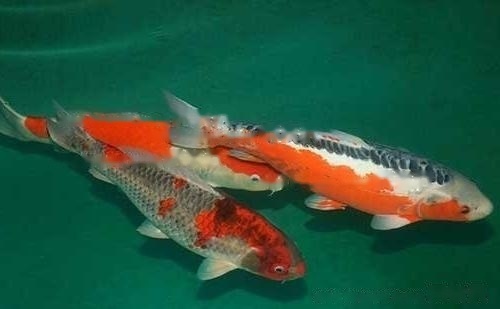Koi originated from the Chinese carp fish, which is the national fish of Japan and has a breeding history of more than 200 years. Koi swim with elegant posture, beautiful body, bright colors and splendid markings. They are called living gems in the water and are larger fish with high ornamental value. However, not many people can really master the correct feeding method. Today, let's follow the pet leader to see the feeding method of koi fish!

1. Environmental requirements for koi fish
Like goldfish, koi do not have high requirements for water temperature and water quality. The best temperature is 2-30 degrees, but they cannot resist water temperature. If the temperature changes suddenly and the temperature difference suddenly exceeds 2℃-3℃, koi will experience discomfort; koi fish need sufficient oxygen and are suitable for living in a slightly alkaline, low-hardness water quality environment. Therefore, it is usually best to prepare the gas extension in advance for the koi.
2. Feeding of Koi Fish
Koi are omnivorous fish, generally mollusks, fragments of higher aquatic plants, benthic animals and even small Algae or synthetic pellets can be eaten. Of course, the owner can also go to the ornamental fish market to buy some fish feed for feeding. Live bait is also a very good fish feed.
3. The stocking density of koi fish
For general stocking of fish ponds, please refer to the density table of stocking koi in fish ponds, and of course refer to the density of your own fish. The size and the size of the terrarium should be as thin as possible to allow the fish to swim freely in the water.
4. Four Seasons Management of Koi Fish
As the temperature of koi changes in seasons, owners should also change their feeding methods. In spring, the koi began to recover from hibernation, and the feeding was transferred from indoor to outdoor to keep the water temperature stable; the feeding was mainly plant-based, and the feeding amount gradually increased from less. In summer, the weather is hot and hot, and a plastic shading net must be added to prevent direct sunlight. In autumn, the weather is less rainy and more sunny, and the water temperature has dropped significantly, which is the most suitable for the growth of koi. In winter, the weather is relatively cold. When the temperature drops to 0 degrees, the koi should be transferred to the indoor fish pond in time for wintering. The indoor water temperature should be kept at 2-10 degrees.
5. Disease prevention of koi fish
The common fish diseases of koi mainly include saprolegnia, gill rot, enteritis, vertical scale, etc. several. Therefore, in the daily management, the owner should often observe the water quality, eating conditions, swimming frequency, etc., so that if there is a problem, it can be found in time. The water should be changed frequently at ordinary times, the feed must be hygienic, and some disinfectant water can be added regularly.
![[Dog Training 5] The training method of pet dog dining etiquette](/static/img/12192/12192_1.jpg)




